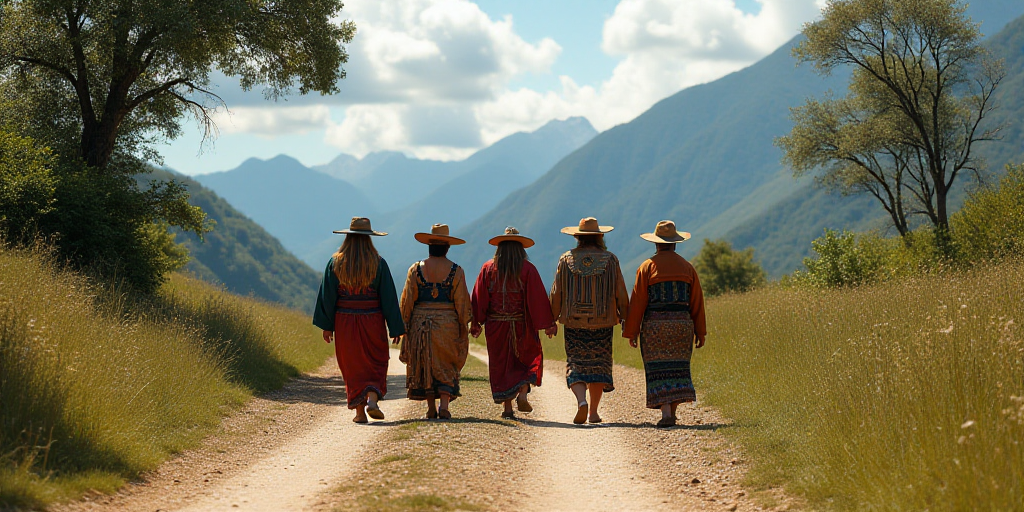A Historic Achievement for Indigenous Communities
The Wixaritari pilgrimage route, known as “Ruta Wixárika por los sitios sagrados a Wirikuta. Tatehuarí Huajuyé” (The Grandfather Fire’s Path), has been inscribed on the UNESCO World Heritage List during the 47th session of the UNESCO World Heritage Committee in Paris. This recognition is a culmination of decades-long demands from Wixaritari communities, according to Francisco Vidargas Acosta, the Director of World Heritage at Mexico’s National Institute of Anthropology and History (INAH).
First Living Heritage Site on the UNESCO List
This inscription is historically significant as it marks the first time a “living” site has been included in the UNESCO World Heritage List. INAH’s Diego Prieto Hernández emphasized that this spiritual wisdom is now acknowledged as a legacy for humanity, one to be studied, valued, protected, respected, safeguarded, and disseminated.
The Wixaritari Pilgrimage Route
According to Wixaritari oral tradition, their ancestral gods emerged from the sea with the purpose of pilgrimage to the burnt cerro (hill) of Wirikuta, where Tayau, the Sun Father, was born. Along this sacred path, deities like Tamaatsi (White-tailed Deer) and Tatewari (Grandfather Fire), along with essential elements of nature such as Mother Earth and water deities, left their imprints. Some became rivers, streams, rocks, canoes, or mountains along the sacred route; others, like Tamaatsi, who offered his blood to the ancestors, settled in the mountains. The most significant deities, like Tamatsi Kauyumarie (Blue Brother Fawn), embodied in peyote (hikuri), chose the Wirikuta hill as their home.
For generations, the Wixaritari people have undertaken a pilgrimage to Wirikuta, following the Grandfather Fire’s Path through sacred sites. Here, they venerate deities, present offerings, and express gratitude for life, health, nature’s gifts, and the community’s well-being. The mara’akate (shamans) guide the experience of consuming peyote in a ceremony that enables communication with the divine and access to ancestral knowledge, known as “the gift of seeing.”
Threats to the Wixaritari Culture and Territory
Totupica Candelario Robles, a Wixaritari from Santa Catarina Cuexcomatitlán in Jalisco, participated in the UNESCO session and expressed gratitude for the recognition. He highlighted that mining companies’ presence has sparked greed among landowners and individuals in the region, leading to issues previously absent. Uncontrolled tourism is another threat, with hordes of tourists annually seeking peyote and “mystical” experiences, often disregarding original cultural practices. These tourists misuse peyote varieties, damaging the sacred plant and Wixaritari culture.
The Declared Route
The Wixaritari pilgrimage route spans 500 kilometers, stretching from the Pacific Ocean to the Sierra Madre Occidental across Nayarit, Jalisco, Durango, Zacatecas, and San Luis Potosí. It encompasses 20 sacred sites within over 135,000 hectares. The annual three-month pilgrimage involves elders and mara’akate transmitting knowledge through stories, rituals, dance, and music to younger generations.
The Long Journey to UNESCO Recognition
The Wixaritari communities’ initiative for this recognition began in the 1990s, initially supported by Conservación Humana A.C. and later by INAH. They faced resistance from those with economic interests in the region, primarily mining and tourism industries. In 2015, the first candidacy was proposed, but it didn’t reach UNESCO due to the Mexican Secretary of Economy’s closer ties with mining companies than the Wixaritari people.
The Future of Wixaritari Culture and Territory
The Consejo Regional Wixárika por la Defensa de Wirikuta hopes this inscription will be a tool to protect their sacred territories from extractive and agroindustrial threats. The candidacy, supported by Conservación Humana A.C. and ICOMOS International (UNESCO’s advisory body), includes a comprehensive management, conservation, and safeguarding plan with a biocultural focus.
With 36 sites on the UNESCO World Heritage List, Mexico leads in Americas and ranks sixth globally.
Route Sites
- Nayarit: Tatei Jaramara
- Durango: Huaxa Manaka
- Jalisco: Tuapurie
- Zacatecas: Cuyetsarie, Xurahue Muyaca, Cupuri Mutiú, Cacai Mutijé, Macuipa
- San Luis Potosí: Tatei Nihuetúcame, Huahuatsari, Cuhixu Uheni, Tatei Matiniere, Nihuetaritsié, Natsitacua, Uxa Tequipa, Tuy Mayau, Huacui Quitenie, Wirikuta – Mucyuahue, Wirikuta – Raúnax, Wirikuta – Maxa Yaritsie






